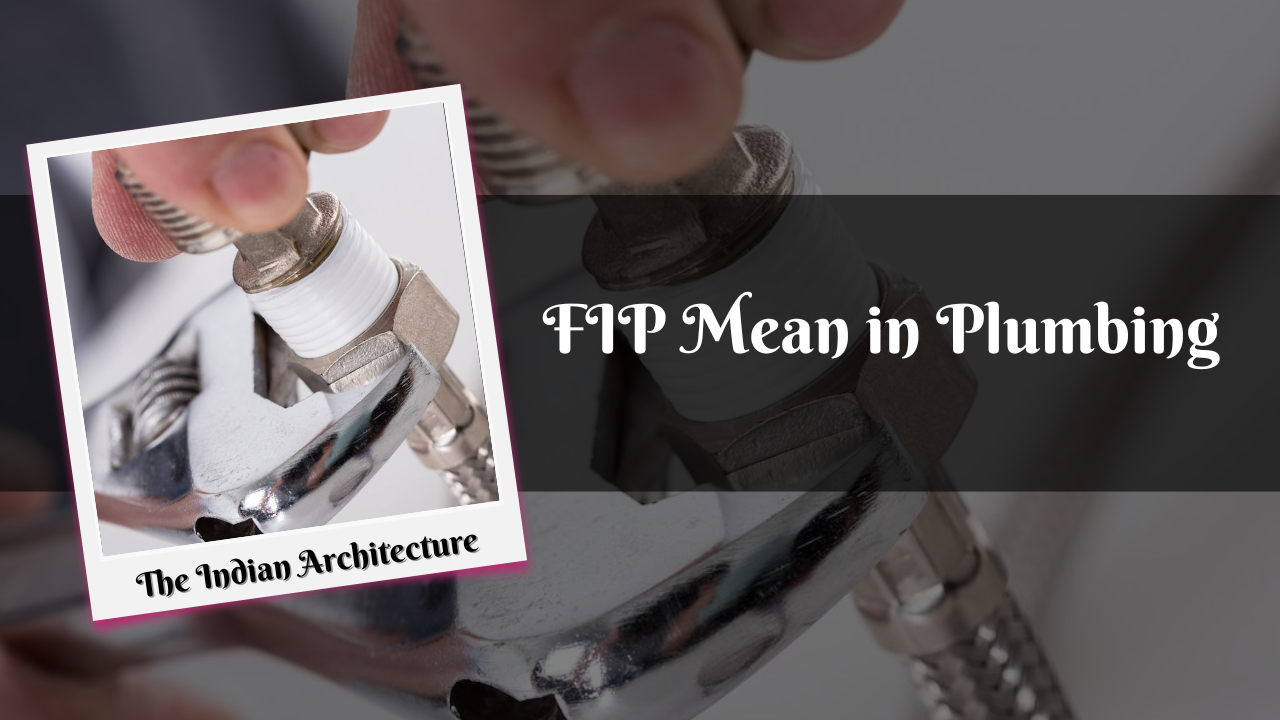What Does FIP Mean in Plumbing? Full Guide Explained

FIP stands for Female Iron Pipe. It is a type of pipe fitting that has internal threads and is designed to receive a male-threaded fitting. In simple words, when you see FIP, think of it as an internal threading that connects to an external thread, also known as MIP (Male Iron Pipe).
You’ll find FIP fittings commonly used in plumbing systems for water, gas, or other piping applications because they allow secure and leak-proof connections.
Why Should You Care About FIP?
It is very important — especially when you are doing DIY installations — as thread types matter a lot. If you mix up fittings, you may end up with leaks for sure or even a system failure.
Let’s say, for example, if you see FIP on a hose kit or adapter, it tells you that it has internal threads. You’ll need a male (outside-threaded) fitting to screw into it.
More Reasons Why It Matters a Lot:
- It helps you get the correct connector for pipes, lines, or hoses.
- It tells you how to apply sealant and how to tighten the fitting easily.
- It avoids costly mistakes and helps you save money.
FIP vs. MIP (and other key acronyms)
Let’s break down some common abbreviations and compare them:
FIP vs NPT
Sometimes you’ll hear words like FIP and NPT in the same breath, which can lead to a bit of confusion. Let me clear that up — NPT stands for National Pipe Thread, and it is a standard for tapered pipe threads in North America.
Meanwhile, FIP is a description of the fitting and its gender — not the thread standard itself. Many FIP fittings use NPT threads, but the acronym FIP does not automatically guarantee NPT, and vice versa.
Long story short:
FIP = Female-threaded fitting
NPT = Standard for how those threads are cut
For two fittings to connect correctly, the female and male ends must follow the same threading standards. If you mismatch the standards, you may get leaks.
Real-World Examples of FIP
Appliances: The water supply line unit for a washing machine might end in a female thread so that the hose can screw into it.
Water Heaters and Boilers: The outlet on a heater may have an FIP fitting so you can connect a male-threaded pipe into it.
Gas Lines: FIP is common when connecting valves to appliances because internal threads provide a secure fit.
How to Use FIP Fittings Correctly (Tips and Tricks)
Confirm the Thread Size and Standards – Don’t assume that just because it says 3/4″ FIP, it’s the same as another 3/4″ FIP from a different brand. Thread pitch, taper, and standard might vary.
Use Proper Sealant – Even though these threads provide a snug fit, you still need something like plumber’s tape or pipe dope on the male portion before you screw it into the female fitting.
Hand-Tighten First, Then Use a Wrench – Start by threading the male into the female by hand until snug, then use a wrench for the final turn. Don’t overdo it — over-tightening can damage or distort the fitting.
Check for Leaks After Installation – Once you’re done, run water and inspect the connection. If you see drips, tighten slightly or disassemble, replace sealant, and re-tighten.
Avoid Mismatching Types – If you try to mate an FIP with a male of a different standard (for example, BSP vs NPT), you risk cross-threading or leaks. Threads must match both gender and standard.
The Sock and Sneaker Approach
Think of FIP as a sock and MIP as a sneaker — the sock receives the sneaker, taking its shape so that the fit is snug and comfortable. If you try to put the sneaker into a hat or a mismatched sock, you’ll end up with a poor fit for sure.
Just like that, choosing the right sock-sneaker combo is like picking the correct FIP/MIP combo with a proper sealant — it works best for your plumbing system.
Final Words
Mastering small acronyms like FIP or MIP can give you much more confidence when tackling plumbing tasks or doing DIY home renovations. For me, it’s like learning a secret handshake among plumbing pros.
Next time you buy a hose kit, connector, or adapter, you’ll know exactly what FIP indicates and how it connects with its counterpart — so good luck with that!
If you’re taking on a DIY project, take a moment to check the threads — is it FIP or MIP, and what standards apply? Apply sealant, align gently, and tighten carefully. Your plumbing system will thank you later.
Also Read:
